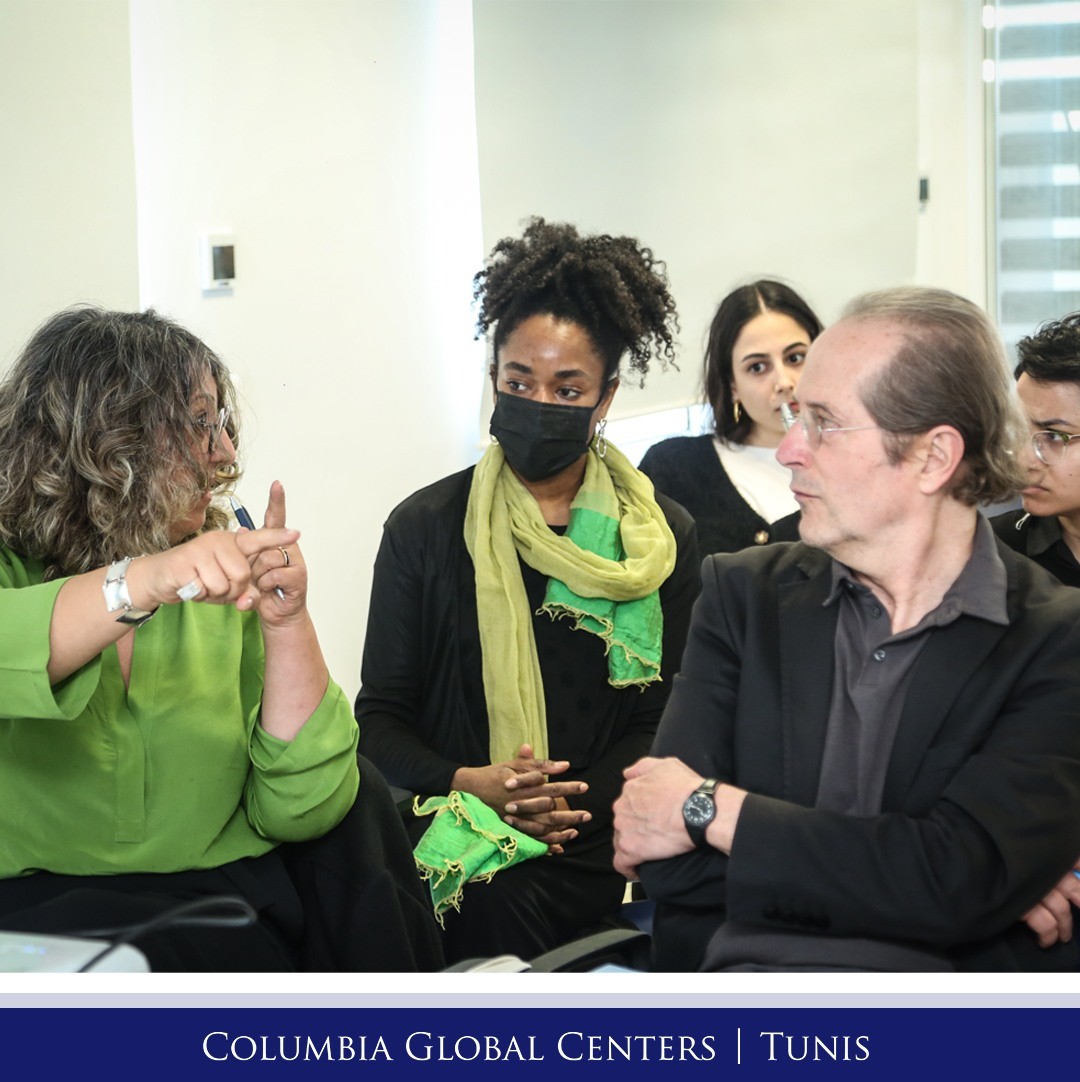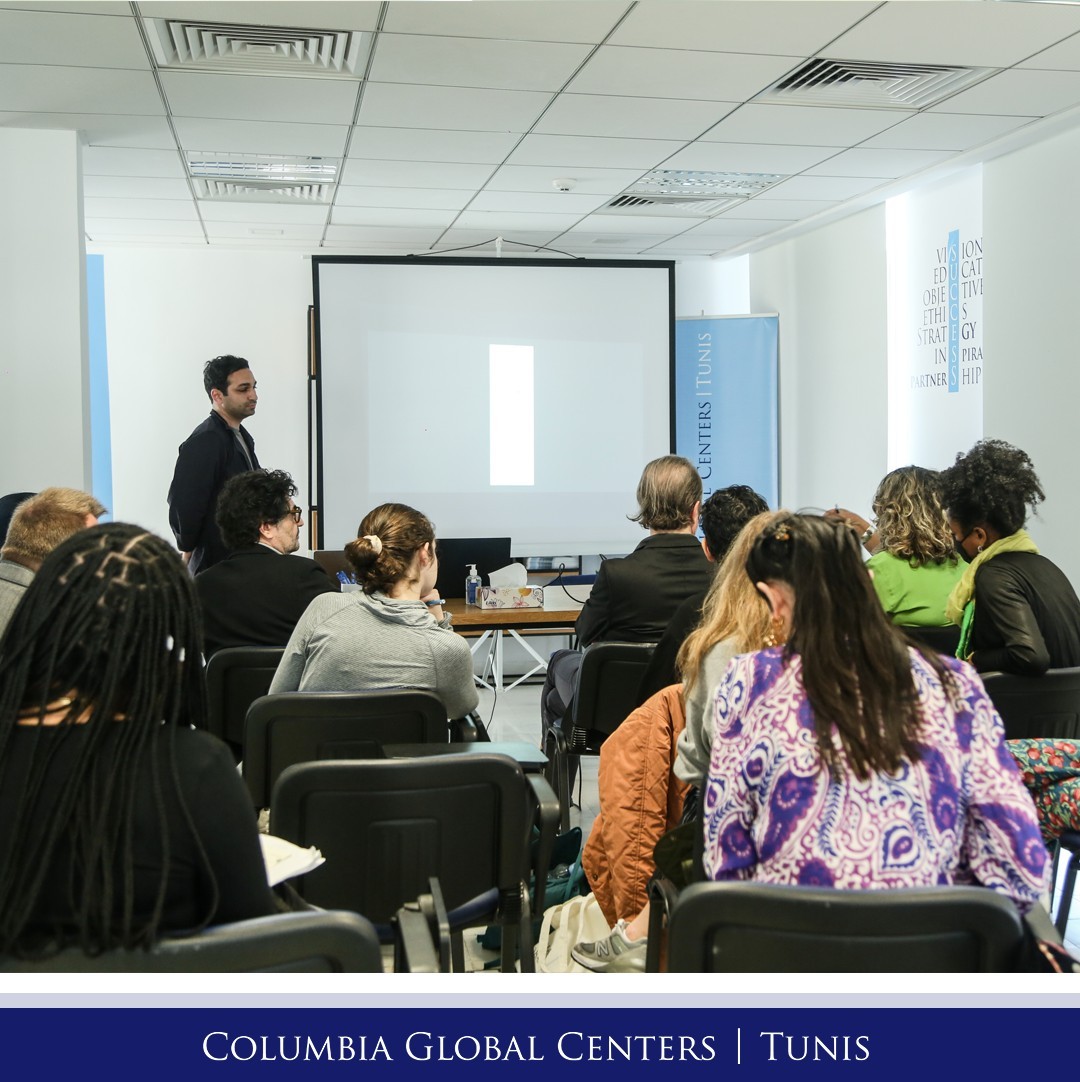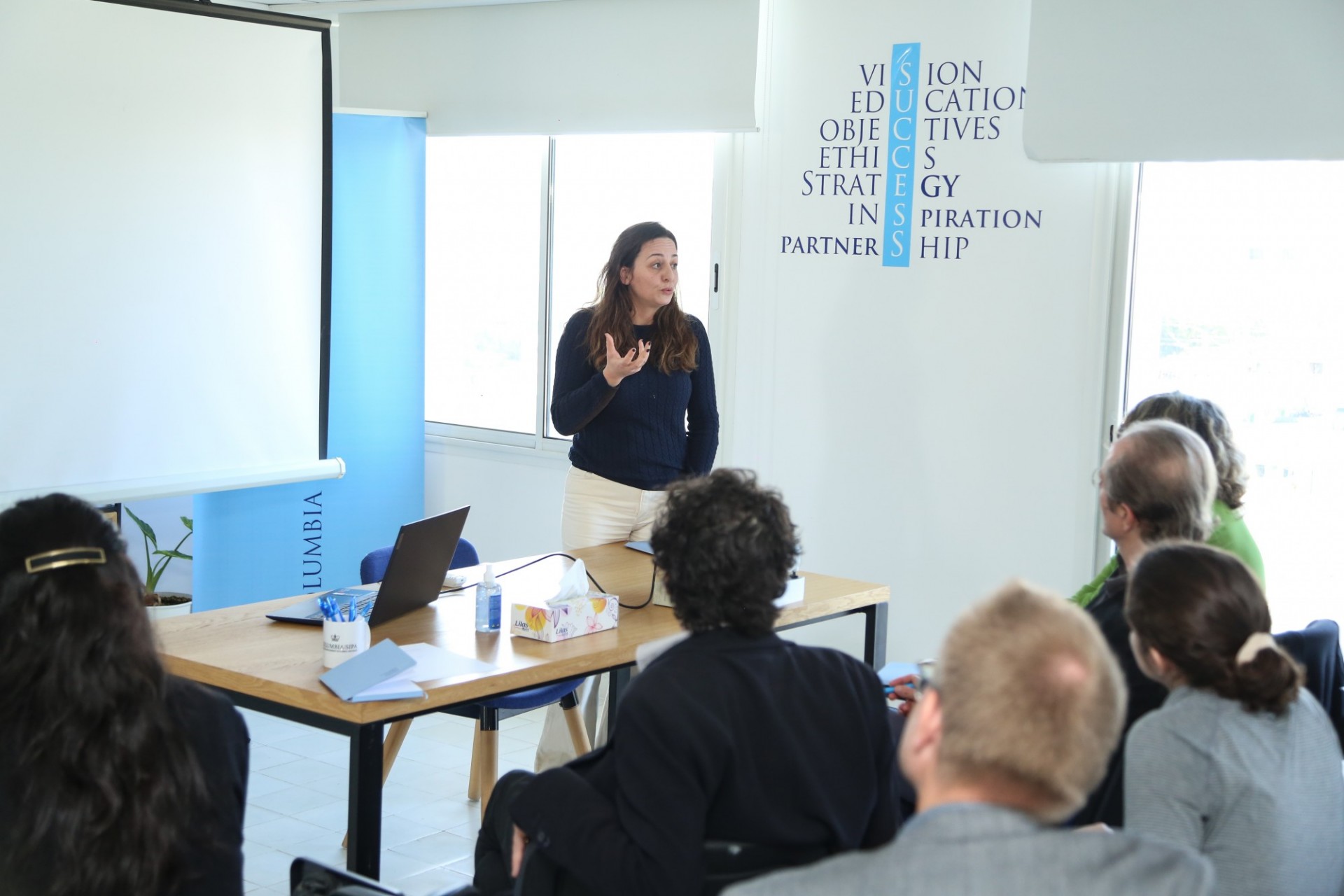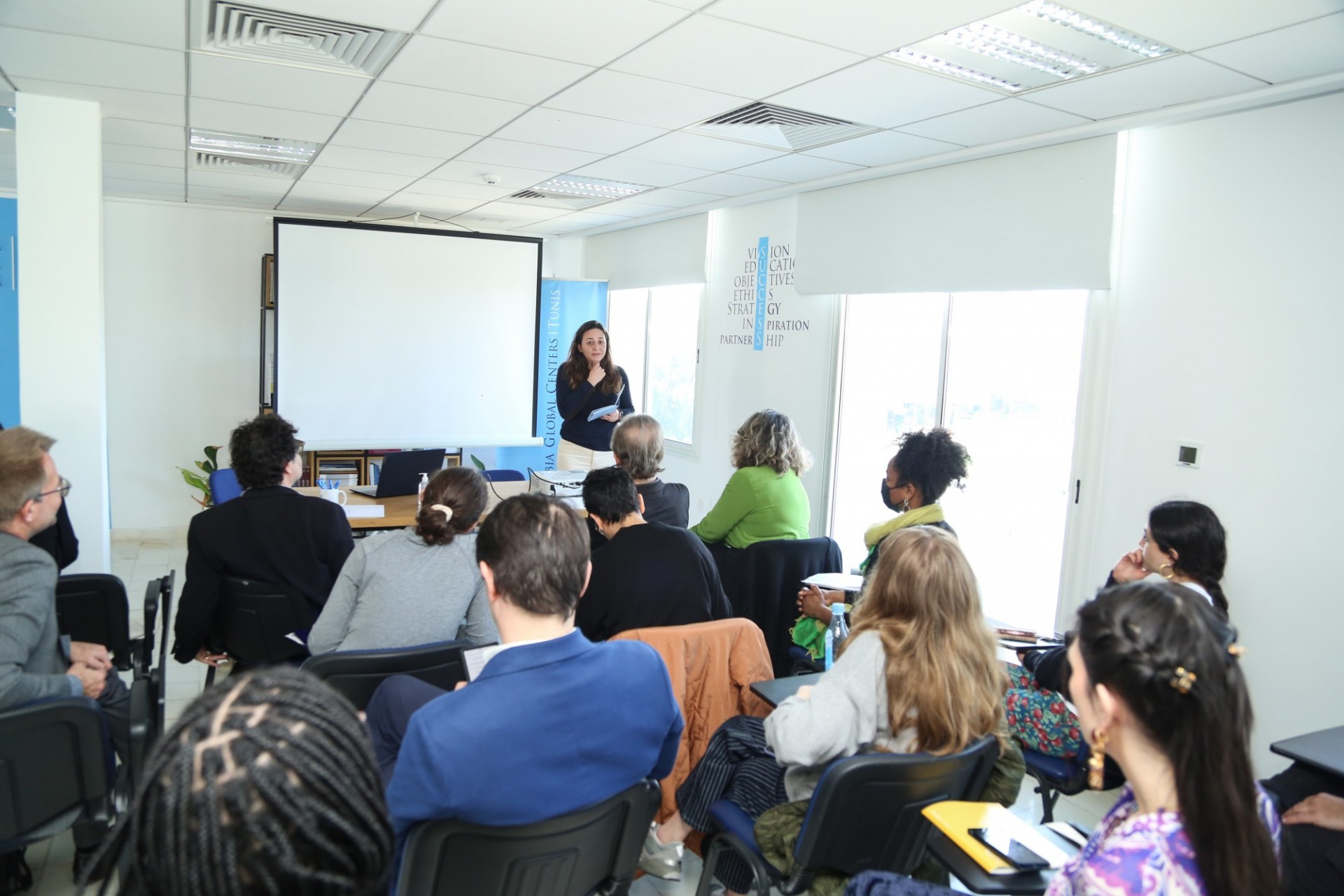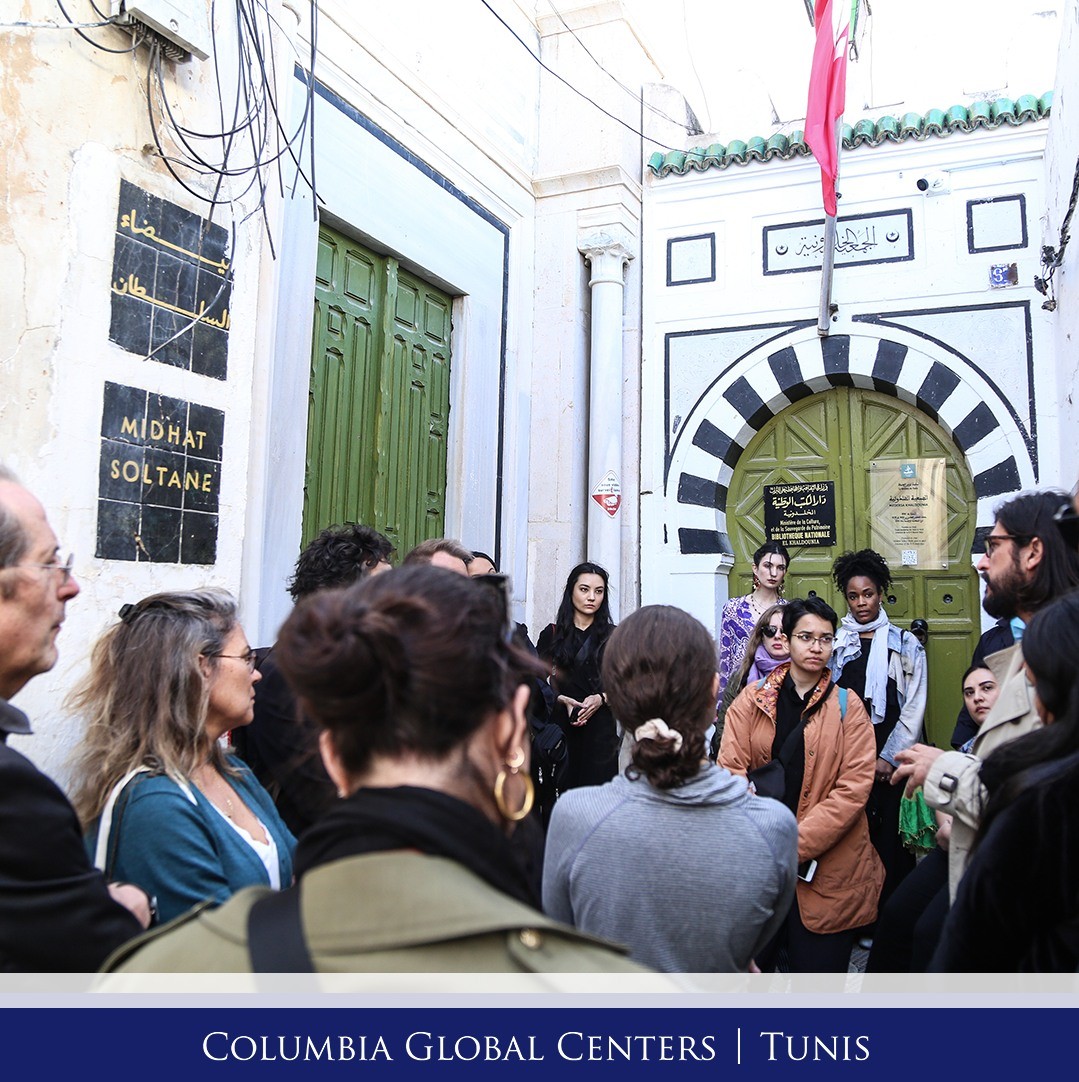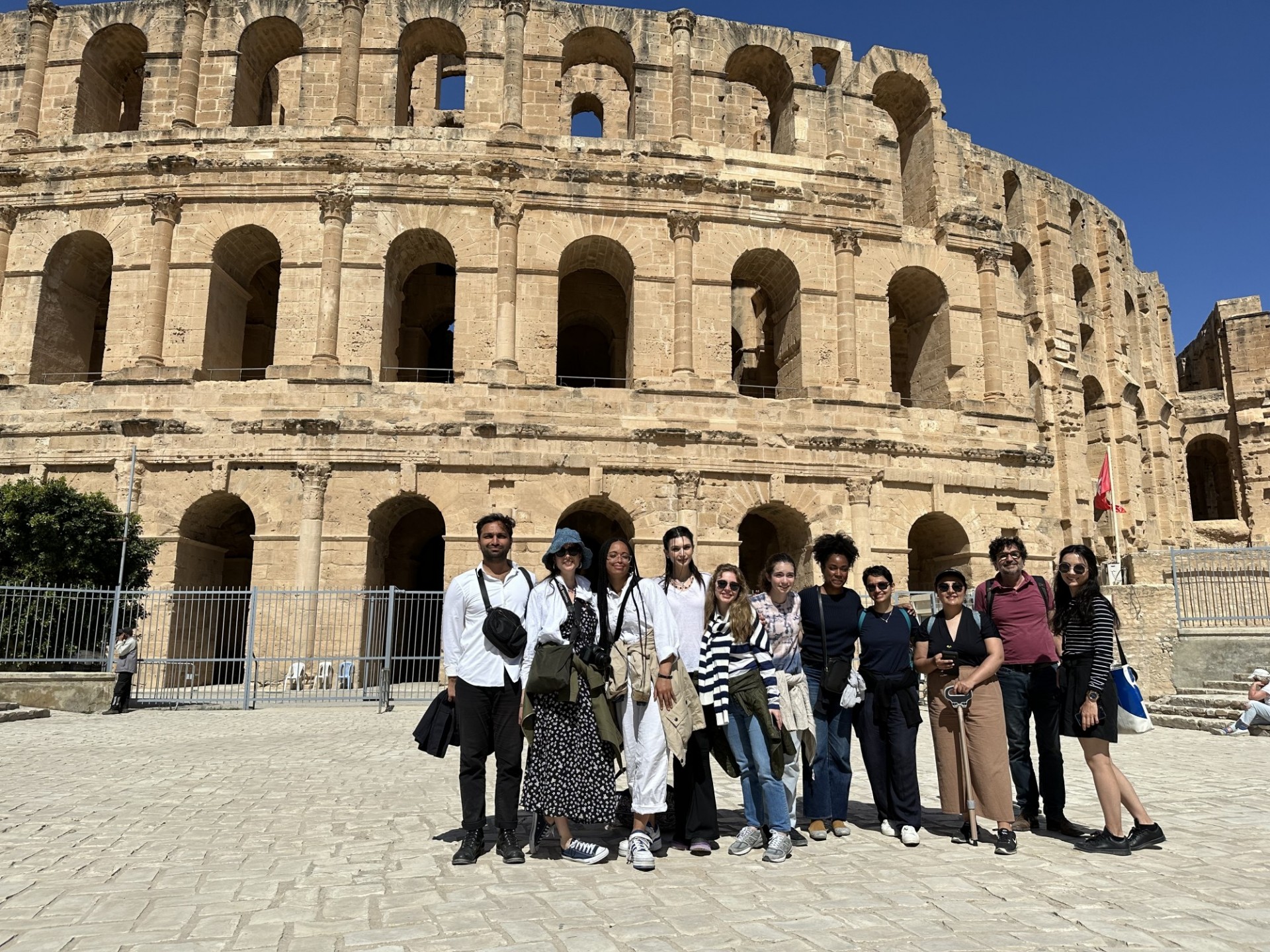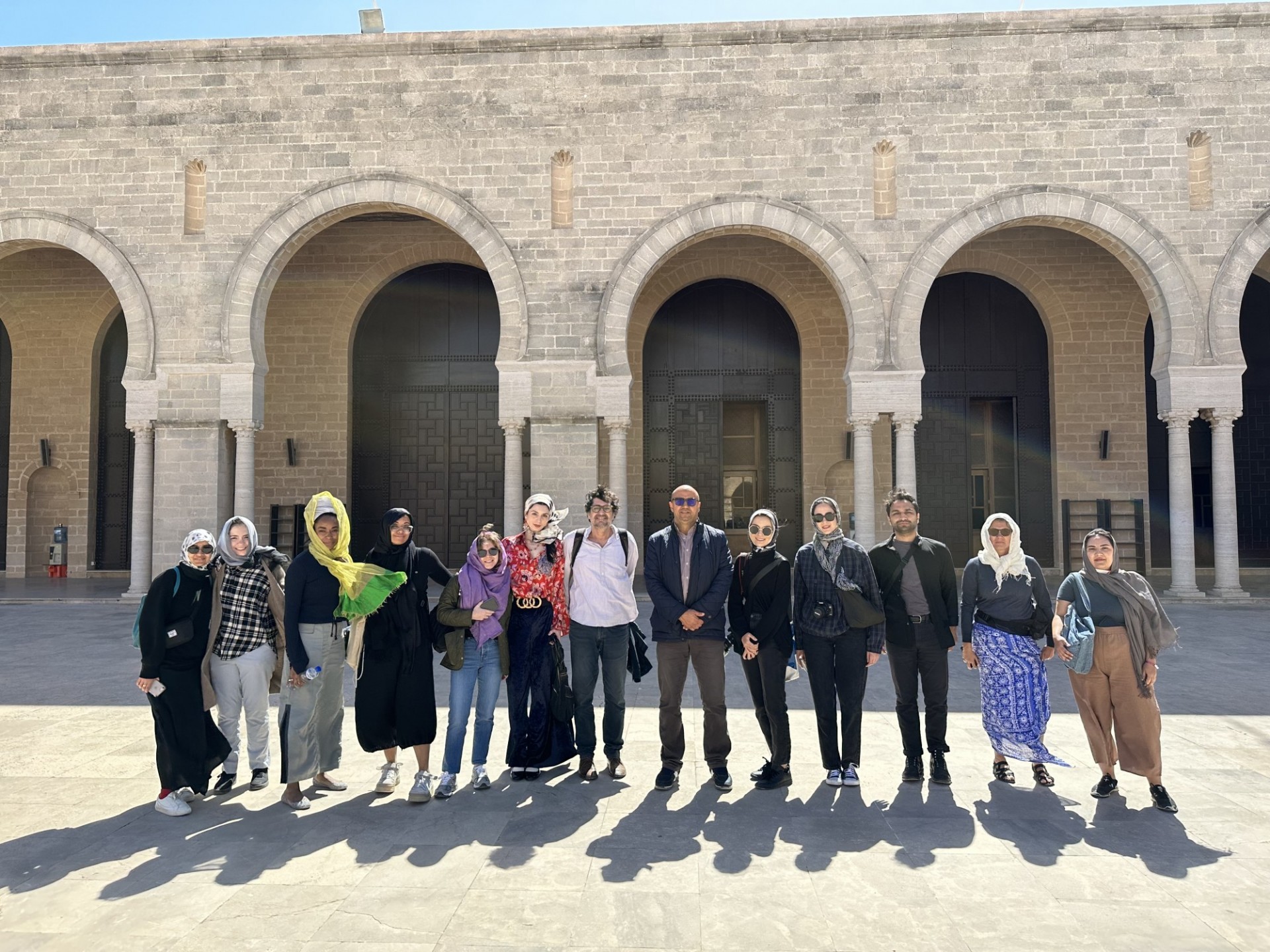Ifriqiya: the Art and Architecture of Tunisia - workshop
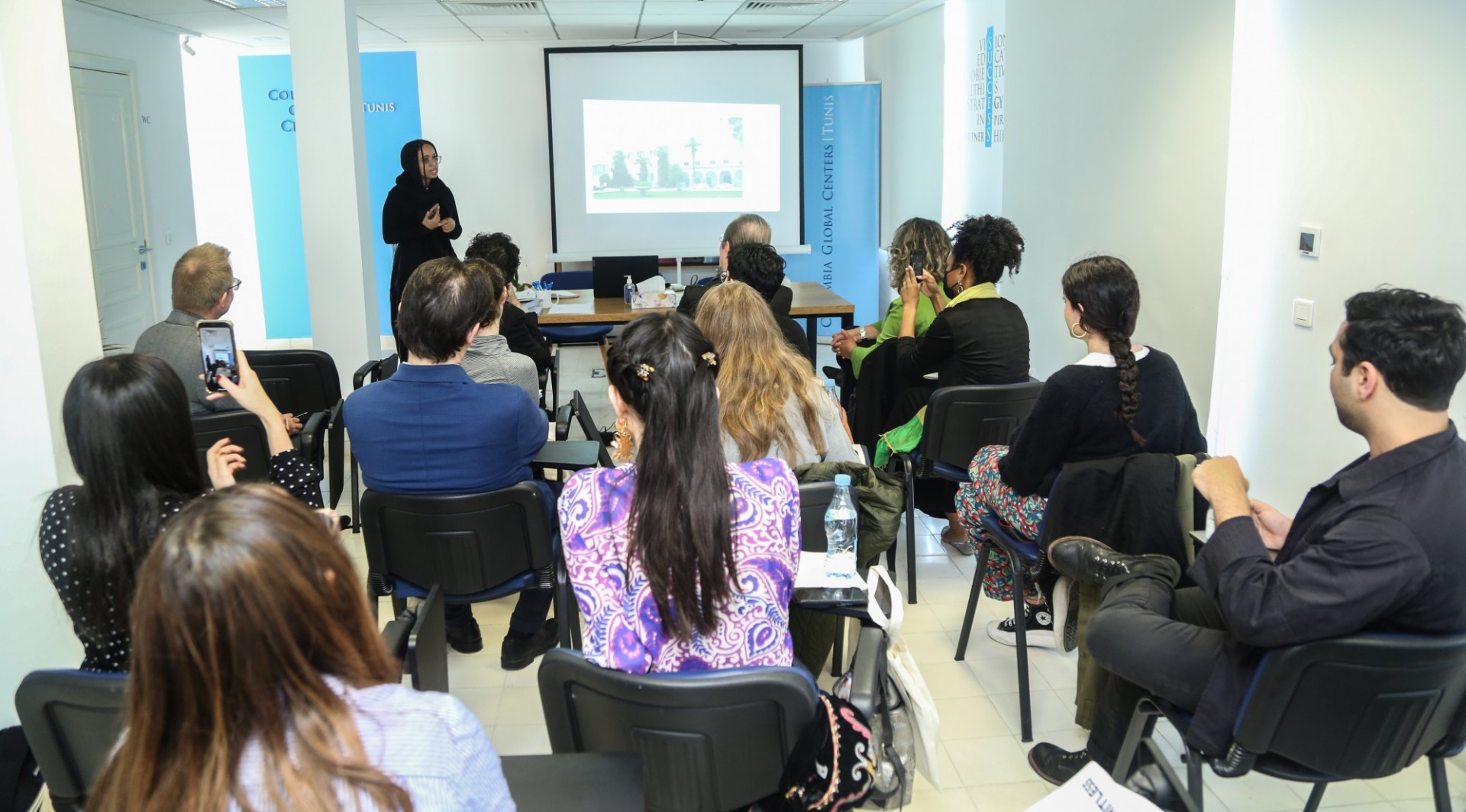
A group of faculty members and graduate students from Columbia University's Department of Art History & Archaeology and GSAPP embarked on a fascinating journey to Tunisia, where they participated in the "Ifriqiya: the Art and Architecture of Tunisia" seminar.
The seminar, organized by Columbia Global Centers | Tunis in partnership with Columbia's Department of Art History & Archaeology, aimed to uncover the captivating art and architecture of Tunisia through a unique lens - by visiting various museums, monuments, and sites across the country.
Over the course of ten days, the scholars immersed themselves in the cultural and historical landmarks that Tunisia had to offer. They kicked off their journey in the ancient city of Carthage, a UNESCO World Heritage Site that once served as a pivotal center of trade and commerce in the Mediterranean. Here, the group delved into the city's past and explored its influence on Tunisian art and architecture.
Next on the itinerary was Sousse, another UNESCO World Heritage Site that boasted a plethora of notable monuments, including the Great Mosque of Sousse and the Ribat of Sousse. The group had the chance to learn about the town's rich cultural and historical heritage, as well as the history of Islam in Tunisia.
The scholars then ventured to el Jem. El Jem is a small town located in central Tunisia, approximately 120 kilometers southeast of Tunis. It is famous for its incredibly well-preserved Roman amphitheater, which is considered to be one of the best examples of Roman architecture in North Africa. Built in the 3rd century AD, the amphitheater in el Jem could hold up to 30,000 spectators and was used for gladiatorial contests and other public spectacles. Today, it is a popular tourist attraction and a UNESCO World Heritage Site. In addition to the amphitheater, el Jem has several other notable landmarks, including the Museum of El Jem, which showcases a collection of Roman mosaics, sculptures, and other artifacts from the ancient city of Thysdrus (modern-day el Jem).
The group continued their journey to Mahdia, a coastal town that was once a major center of trade and commerce in the Mediterranean, as well as the capital of the Fatimid Empire. Here, they explored the Mahdia Museum which showcases a collection of artifacts and exhibits that highlight the town's past. The museum features Roman and Byzantine pottery, Islamic ceramics, and other artifacts from various periods in Mahdia's history.
Monastir was another coastal town that the group had the chance to explore. One of the most notable landmarks in Monastir is the Ribat of Monastir, a fortified Islamic monastery that dates back to the 8th century AD. The Ribat was originally built to defend against attacks from foreign invaders, but today it is a popular tourist attraction and offers visitors a chance to see traditional Islamic architecture and design. Another popular landmark in Monastir is the Museum of Islamic Art, which showcases a collection of Islamic artifacts and exhibits from across Tunisia and the Islamic world. The museum is housed in a traditional Islamic-style building and features a beautiful courtyard with fountains and mosaics.
Last but not least, the group visited Kairouan, It is considered to be the fourth holiest city in Islam, after Mecca, Medina, and Jerusalem, and is known for its rich history, stunning architecture, and important cultural landmarks. One of the most notable landmarks in Kairouan is the Great Mosque of Kairouan, which was built in the 7th century AD and is one of the most important Islamic sites in North Africa. The mosque features a stunning courtyard, a beautiful minaret, and intricate details and mosaics throughout the building.
Overall, this journey through Tunisia allowed the scholars to gain a deeper understanding of the country's rich cultural and historical heritage, and how it has influenced art and architecture across the centuries.
